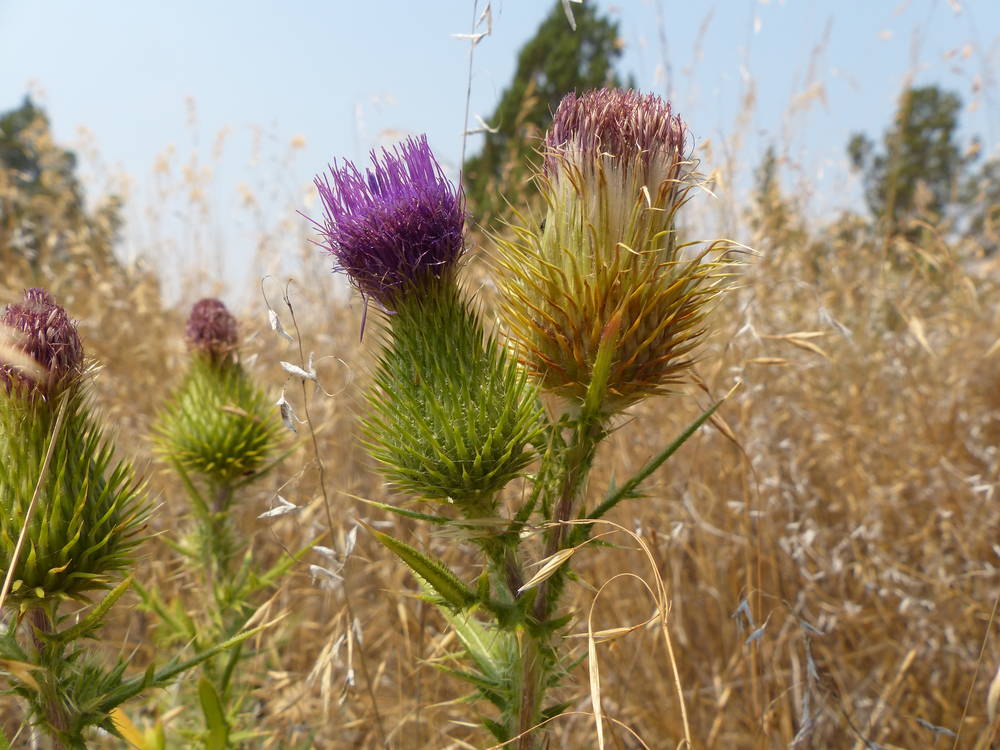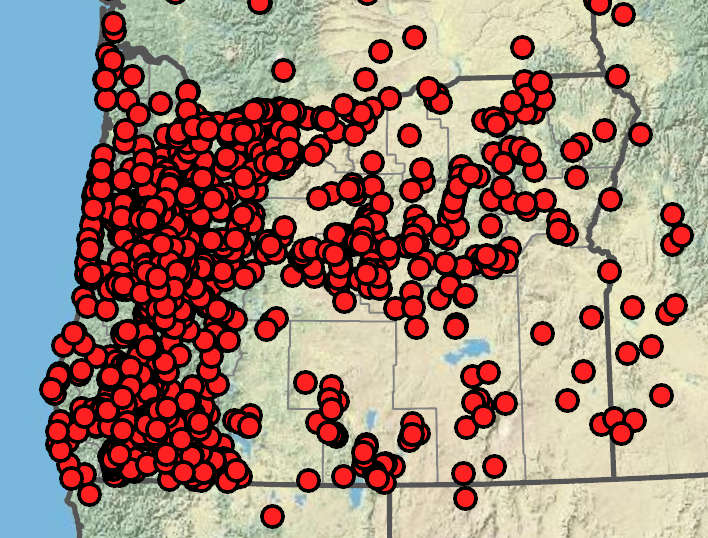Cirsium pulcherrimum
Cirsium vulgare
bull thistle, common thistle
usually single, spreading-villous, sometimes arachnoid.
oblong-lanceolate to obovate, 15–40 × 6–15 cm;
margins 1–2-pinnate;
lobes lanceolate to triangular;
spines 2–10(15) mm;
surfaces abaxially tomentose; ± villous, adaxially glabrate to sparsely tomentose, with appressed bristle-like spines;
basal absent or present at flowering, sessile, decurrent, or petiolate.
hemispheric to campanulate, 2–4 × 2–4 cm, thinly tomentose.
corollas 25–35 mm, purple, rarely white;
tubes 18–25 mm;
throats 3–6 mm;
lobes 5–9 mm;
style tips 3.5–6 mm.
without glutinous ridges;
spines 1–5 mm.
3–5 mm, light brown with darker streaks;
pappi 20–30 mm.
few to many.
Cirsium pulcherrimum
Cirsium vulgare
Disturbed areas, pastures. Flowering Jun–Sep. 0–2000 m. All ecoregions. CA, ID, NV, WA; throughout North America; worldwide. Exotic.
Cirsium vulgare is our only species with bristle-like spines on the upper leaf surface. This species is considered a noxious weed and is unpalatable to most livestock.
Bridget Chipman
- Local floras:
BC,
CA,
OR,
WA
- Local Web sites:
CalFlora,
CalPhotos,
Flora NW,
PNW Herbaria
WildflowerSearch
iNaturalist (observations)
USDA Plants Database
- LBJ Wildflower Center
- SEINet
- Plants of the World Online
- Encyclopedia of Life
- Wikipedia
- Google Image Search



